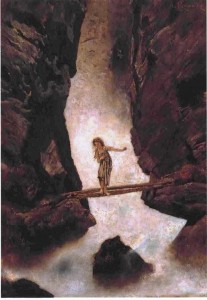
I used the search function on this site to look up any Middle Way treatment of ‘altruism’ but, as nothing showed up, I decided to post my thoughts and questions for all to see, and to invite comments.
I recently posted comments on the Secular Buddhists UK (SBUK) site in response to a debate on “Buddha losing his religion”. At some point the discussion turned to Buddha rupas, and a contributor wrote that he had carved a seated Buddha figure out of a dead tree-stump in a public park. This carved figure was the object of further treatment by a person or persons unseen: spray paint, tar and amputation of the figures head and limbs occurred.
I need to add at this point that, lest I distort the content of the discussion, readers may wish to get its full flavour by reading it for themselves. But I’ll try to set out the main points here, as I understand them, to advance the questions I have about altruism.
The creator of the Buddha-in-the-park is a secular Buddhist, loves carving, and is good at it. In reporting the fate of his artistic endeavour, his posting expressed some pain and disappointment (my interpretation of his words) rather than anger.
Some discussion on what had befallen his carving ensued, in which the word vandalism was used, and I was affected by the way motives of possible malicious intent, or ‘mindless’ impulses to personal gratification might be (or possibly were being) attributed to the person or persons involved in ‘modifying’ the Buddha from its creator’s intended form. My position in the debate was that, as we had no direct knowledge of the person(s) involved in the secondary acts on the Buddha, we could not be certain as to her/his/their motive(s), and could only speculate.
It’s important to note that the Buddha-carver himself didn’t contribute to the discussion of motives after his first reporting of the incident.
As the discussion continued, consensus about the likely malicious (or ‘mindless’) motivation of the second person to work on the carving softened, so we agreed (more or less) that we didn’t know. However, one protagonist suggested, wasn’t it at least in order to feel saddened and solicitous (my words) for the original creator’s feelings, because he had wanted to bring beauty and happiness into the lives of others who visited the park, and saw his work?
Now I understand this as an inference of altruism. Without knowing directly what the artist’s motive(s) might have been in taking his blade to the tree-stump, it is inferred that he did so – either primarily or secondarily – from an intent to bring beauty and happiness into the lives of others; persons whom it is unlikely he would know personally (unless he directed them to his work, or waited by his work to get to know them as they encountered it). I think you probably get my meaning here.
My suggestion is that the motives of him who created the Buddha-in-the-park are as inscrutable and as closed to us as the motives of the one(s) who subsequently altered its appearance with spray-paint, tar and a Stanley knife or axe. The artist may, like the one who followed him, have got busy on the stump because he could, and wanted to. On an impulse. For personal pleasure (or personal gratification, which sounds slightly more unpleasant but means much the same, I think).
So there it is. What does the Middle Way have to say about any altruism in this suburban saga? How can I know how far my own acts intend kindness to or benefit for others, and how much they are influenced by my own wish for pleasure, fulfillment, or other benefit for myself? And how much – if anything – does it matter?
The picture above is taken directly from the Wikipedia page on Altruism; I’m not aware of any constraints on my using it in this way. If there are, and I’m made aware of them, I’ll comply with them.

